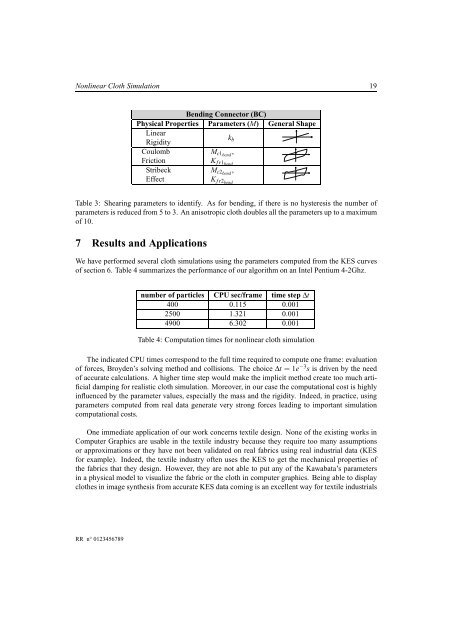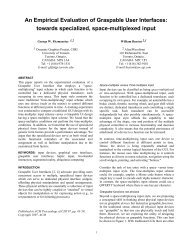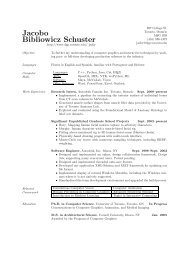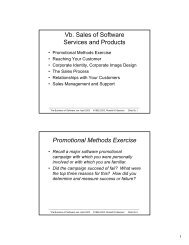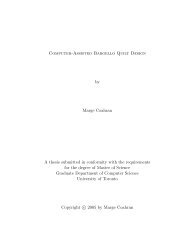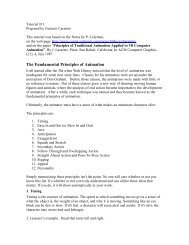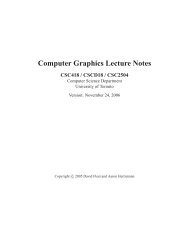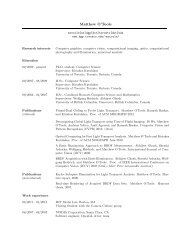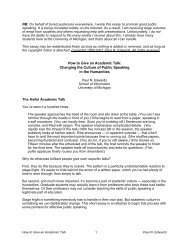Nonlinear Cloth Simulation - dgp
Nonlinear Cloth Simulation - dgp
Nonlinear Cloth Simulation - dgp
Create successful ePaper yourself
Turn your PDF publications into a flip-book with our unique Google optimized e-Paper software.
<strong>Nonlinear</strong> <strong>Cloth</strong> <strong>Simulation</strong> 19<br />
Bending Connector (BC)<br />
Physical Properties Parameters (M) General Shape<br />
Linear<br />
Rigidity<br />
kb<br />
Coulomb<br />
Mc1 , bend<br />
Friction<br />
Stribeck<br />
Effect<br />
Kf r1 bend<br />
Mc2 bend ,<br />
Kf r2 bend<br />
Table 3: Shearing parameters to identify. As for bending, if there is no hysteresis the number of<br />
parameters is reduced from 5 to 3. An anisotropic cloth doubles all the parameters up to a maximum<br />
of 10.<br />
7 Results and Applications<br />
We have performed several cloth simulations using the parameters computed from the KES curves<br />
of section 6. Table 4 summarizes the performance of our algorithm on an Intel Pentium 4-2Ghz.<br />
number of particles CPU sec/frame time step Δt<br />
400 0.115 0.001<br />
2500 1.321 0.001<br />
4900 6.302 0.001<br />
Table 4: Computation times for nonlinear cloth simulation<br />
The indicated CPU times correspond to the full time required to compute one frame: evaluation<br />
of forces, Broyden’s solving method and collisions. The choice Δt = 1e −3 s is driven by the need<br />
of accurate calculations. A higher time step would make the implicit method create too much artificial<br />
damping for realistic cloth simulation. Moreover, in our case the computational cost is highly<br />
influenced by the parameter values, especially the mass and the rigidity. Indeed, in practice, using<br />
parameters computed from real data generate very strong forces leading to important simulation<br />
computational costs.<br />
One immediate application of our work concerns textile design. None of the existing works in<br />
Computer Graphics are usable in the textile industry because they require too many assumptions<br />
or approximations or they have not been validated on real fabrics using real industrial data (KES<br />
for example). Indeed, the textile industry often uses the KES to get the mechanical properties of<br />
the fabrics that they design. However, they are not able to put any of the Kawabata’s parameters<br />
in a physical model to visualize the fabric or the cloth in computer graphics. Being able to display<br />
clothes in image synthesis from accurate KES data coming is an excellent way for textile industrials<br />
RR n° 0123456789


